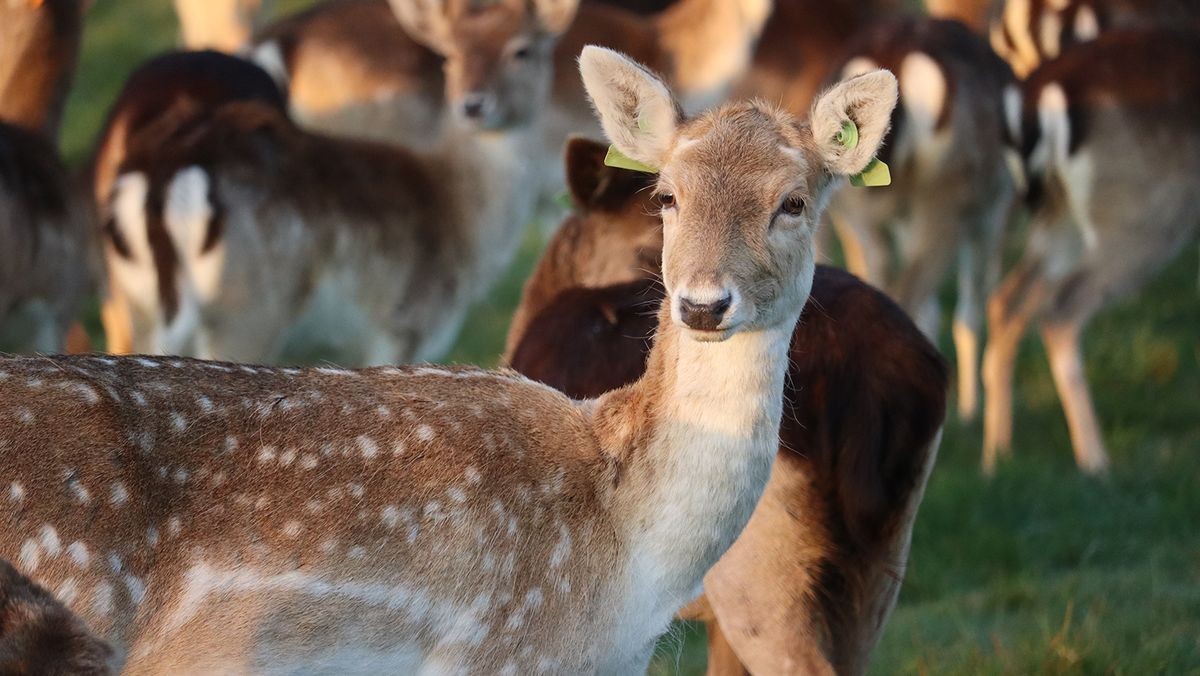If you’ve encountered a gathering of deer gracefully grazing in a meadow or swiftly crossing a woodland trail, a question likely arises: What do you call a group of deer?
The straightforward answer is a herd. This term is the most commonly used and widely accepted today.
However, the captivating nature of deer—part of the Cervidae family—has spurred a rich history of collective nouns, evolving through centuries of literature and regional customs. Let’s explore these names and why this animal group warrants such poetic language.
Understanding “Herd” and Seasonal Gatherings
The word “herd” is standard terminology for North American deer, encompassing species such as white-tailed deer, mule deer, and elk. In the wild, these groupings are often seasonal, forming during migrations or in response to harsh winter conditions.
A typical herd will include female deer (does), young deer (fawns), and sometimes male deer (bucks). During the rut, the mating season, bucks may temporarily join the herd.
Beyond “Herd”: A Collection of Collective Nouns
While “herd” remains the primary term, there’s a captivating array of other collective nouns historically used to describe deer:
- Bevy: Though rare, this term has appeared in English literature.
- Mob: Occasionally utilized in hunting terminology.
- Parcel and brace: These are considered archaic terms, typically referring to smaller groups.
These examples highlight a fascinating linguistic tradition that gives us unique terms such as “a raft of ducks,” “a gaggle of geese,” or “a sloth of bears.” Deer hold their place alongside them, offering a few options depending on the context.
Group Names Across the Deer Family
The deer family is broader than just deer; it also encompasses moose, elk, reindeer, and caribou. Here’s a breakdown of their group names:
- Elk: Referred to as a herd or a gang, commonly seen together in open fields.
- Moose: Typically solitary creatures, but the term applies when observed grouped.
- Caribou/Reindeer: Often form large migrating herds, particularly noticeable in northern climates.
These animals share common traits: hoofed feet, antlers covered in velvet in males (and in both sexes for reindeer), and a plant-based diet. They typically undergo seasonal migrations or adjust behavior based on food availability.
The Unique World of Antlers
Almost all members of the deer family have antlers in males—with the exception of reindeer, where females also sport antlers. The one exception is the Chinese water deer, which lacks antlers, instead possessing tusks that males grow annually. In species like reindeer, females also grow them. Antlers are covered in velvet and shed after the mating season. Crucially, antlers regenerate annually—a distinction from horns, which remain with an animal throughout its life.
Observing Deer in the Field
Whether a university-led wildlife study or a local field review, you might encounter varied terms based on observed behavior. These creative terms, while less formal, reflect our human instinct to categorize and understand the natural world.
So, while “herd” is the widely accepted standard, the next time you observe a group of deer, feel free to playfully refer to them as a bevy or a mob. You’re then participating in a centuries-old linguistic game about the animal kingdom.
Ultimately, these group names tell a story of our evolving language and our enduring fascination with the majestic deer and its relatives.
